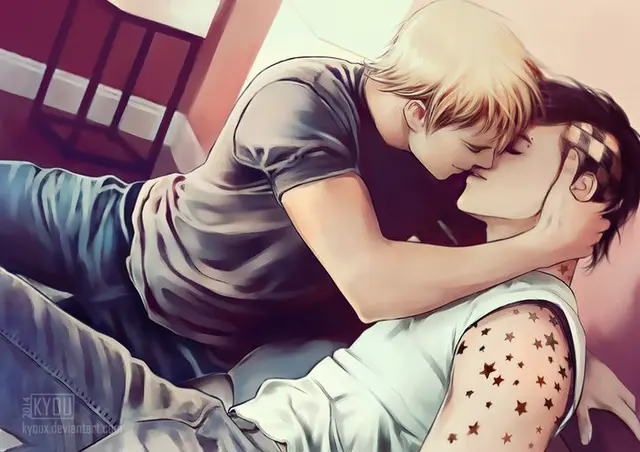“Boys’ love” comics dealing with male-male romance are shooting up in popularity ... especially among women.
The genre seems to have captured the hearts of many female “otaku” geeks, with such fans even having their own nickname, “fujoshi.”
But BL manga is also pulling in readers from across the fan spectrum due to the comics' wide-ranging themes and situations.
“Ten Count,” a story about a corporate secretary suffering from mysophobia, a fear of germs, who finds himself attracted to a cool-looking counselor, has sold more than 1.5 million copies in two years.
“It is conspicuous that works in which the story not only shows characters starting romantic relationships, but also develops in a realistic manner and portrays their heartache, are popular,” said a staffer at Kinokuniya bookstore chain’s Shinjuku Main Store in Tokyo.
The store sells about 4,000 BL comic books each month, according to the staffer in charge of that section.
Tear-jerker “Escape Journey” has won support from BL-loving fujoshi and general readers alike as it scrupulously describes the life of college students: their fashion choices and their romantic relationships.
“When it comes to ‘shojo’ manga (girls’ comics), readers can’t get into the story because they can’t help but compare themselves to the characters, but male-male romances are unknown to them,” said Saki Fujita, a member of the editorial department of BL comic anthology Magazine BExBOY, in which “Escape Journey” is serialized.
The “boys’ love” genre of manga at the Kinokuniya bookstore chain’s Shinjuku Main Store is full of comic books that have covers illustrated with good-looking men. Photo: Motohiro Onishi
“The characters are the reflection of women’s dream men,” she added.
BL manga is especially characterized by a wide variety of settings to portray male-male relationships, with themes ranging from mafia and "omegaverse" (an alternate universe where males can get pregnant), as well as idol stories, office romance and other more realistic situations.
“The advantage of BL is that it encompasses a wide range of story types and there is a fan base for each. It is a genre that can offer authors an opportunity to break new grounds,” Fujita said.
Critic Akiko Mizoguchi points out that “Dokyusei" (Classmates), which was published by Akaneshinsha in 2008 and adapted into an animated film this year, opened a new horizon for BL.
It revolves around two senior high school boys who worry about their future and have inferiority complexes. It shows how they find themselves developing romantic feelings for each other in a slow and serious manner.
“Their emotional movements are sincerely portrayed, allowing the story to develop in an exquisite manner,” Mizoguchi said.
“I Hear the Sunspot,” which will be adapted into a live-action movie for 2017 release, is a heart-rending story about Kohei, a deaf college student who can’t blend in with others, and his cheerful and guileless classmate, Taichi. The two become more than friends, but less than lovers.
“I placed emphasis on their loving feelings in creating the story, and even though it is a work of BL, I didn’t feel much difference from any male-female romance,” said author Yuki Fumino.
While efforts are being made to promote a better understanding of sexual minorities, BL comics have dealt with the emotional distress associated with coming out.
“Not all BL manga creators are concerned about the happiness of homosexual people, but it is fair to say that they end up playing a leading part in promoting social evolution,” Mizoguchi said.
(The Asahi Shimbun)
 简体中文
简体中文

